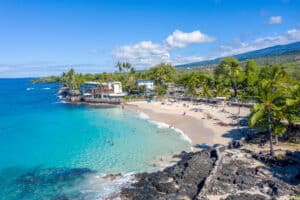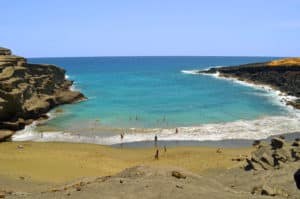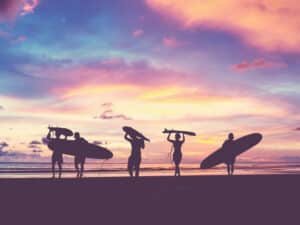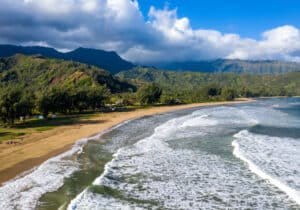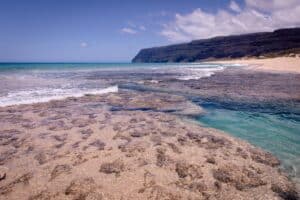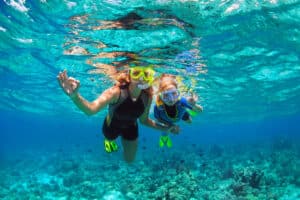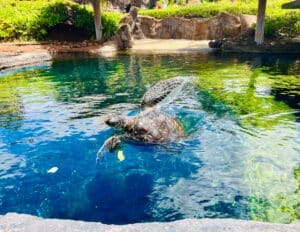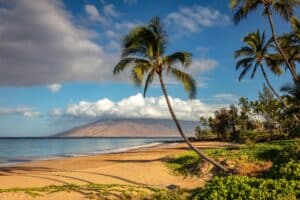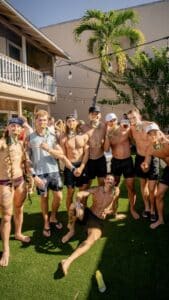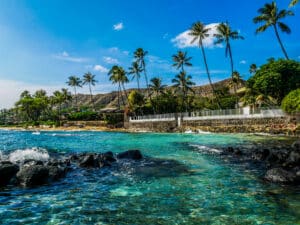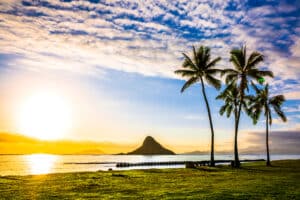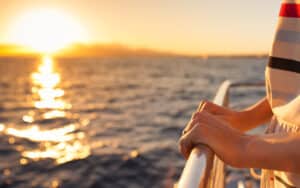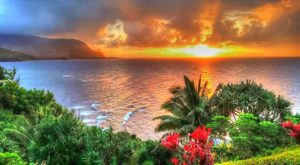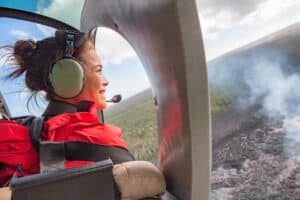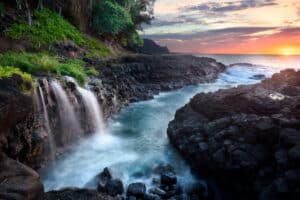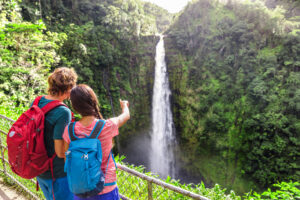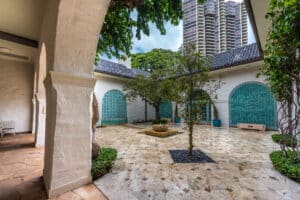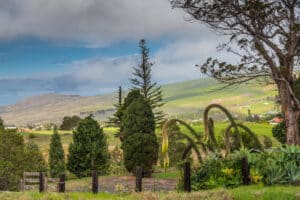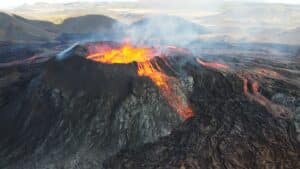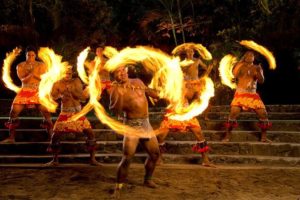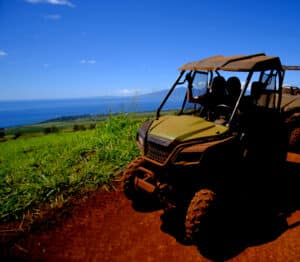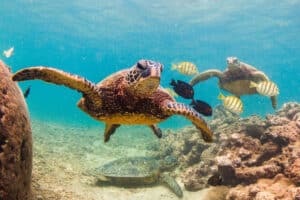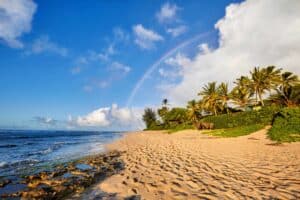If you’ve been dreaming of riding crystal-blue waves under the island sun, the best surf spots in Hawaii are where your journey begins. Surfing — known in Hawaiian as he‘e nalu — is more than a sport here; it’s a way of life. A spiritual dance with the ocean, it’s deeply woven into the fabric of Hawaiian culture. As early explorers recorded in their ship journals, long before surfboards lined beach rental shops, ancient Hawaiians were carving the swells with effortless grace.
Why does surfing flourish here? The islands are blessed with some of the best waves in the Pacific. Whether you’re an experienced rider or a first-timer eager to catch the pros carve it up, this guide will point you to the can’t-miss locations for an epic ocean adventure. Let’s dive in.
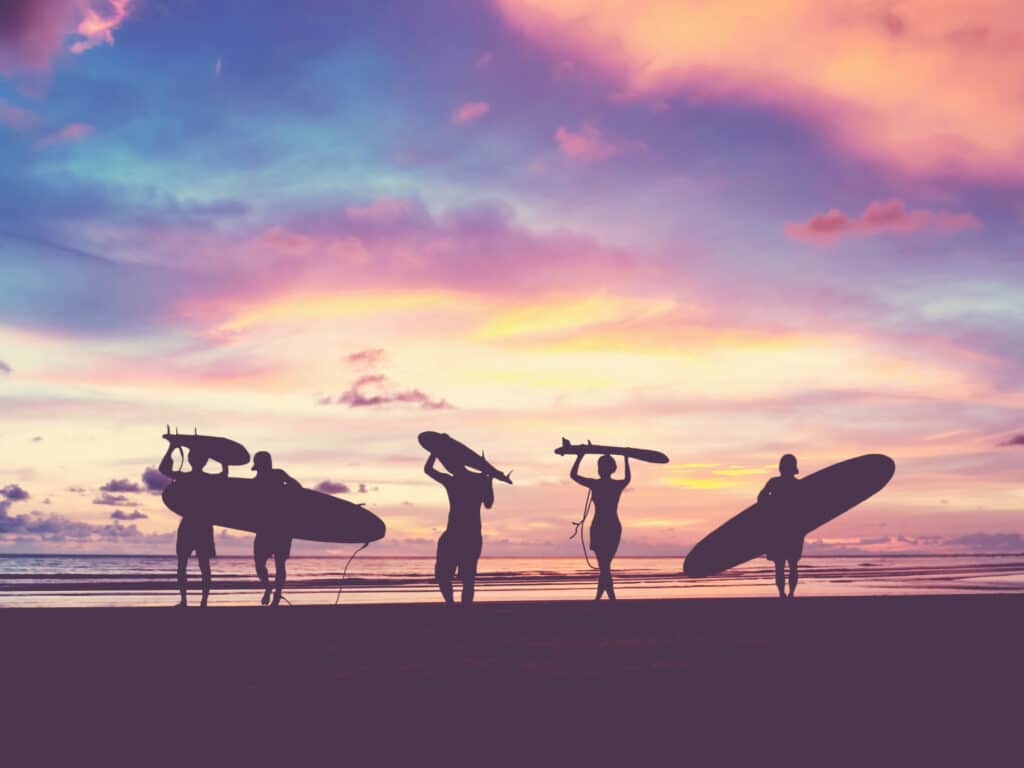
Silhouette of surfers (Shutterstock)
Surfing: Then and Now
Surfing in Hawai‘i evolved tremendously from its ancient roots as a royal pastime to today’s high-tech, high-performance sport. In the early days, surfboards were handcrafted from native trees like koa or wiliwili. Boards used by ali‘i (Hawaiian royalty) were up to 16 feet long and weighed over 150 pounds. Commoners used slightly smaller versions, but all were heavy, finless slabs of polished wood — built for strength and speed, but not ease.
Modern surfboards are lighter, shorter, and designed for maneuverability. Today’s boards are made from high-tech materials like fiberglass, polyurethane foam, and epoxy. The addition of fins in 1935 revolutionized board control, allowing surfers to carve and cut with greater precision.
Technology has also transformed how surfers find waves. Gone are the days of waiting by the shore or relying on word-of-mouth. Now, apps like Surfline provide real-time updates, webcam feeds, and three-day forecasts for dozens of spots across Hawai‘i. Whether you’re checking out Jaws on Maui or the North Shore of O‘ahu, Surfline should be your go-to resource.
In true island style, Hawai‘i was the first state in the nation to recognize surfing as an official high school sport. For generations of local teens, the dream of joining the surf team has been as real and thrilling as catching that perfect wave.
Things to Consider
Geography affects surf conditions. East-facing shores, exposed to consistent trade winds, tend to have choppier and larger waves — especially during the summer. West-facing beaches are more influenced by seasonal swells and are often calmer, though still capable of producing world-class waves in winter. Local surf reports provide heights and safety conditions, helping surfers pick the right break for their skill level.
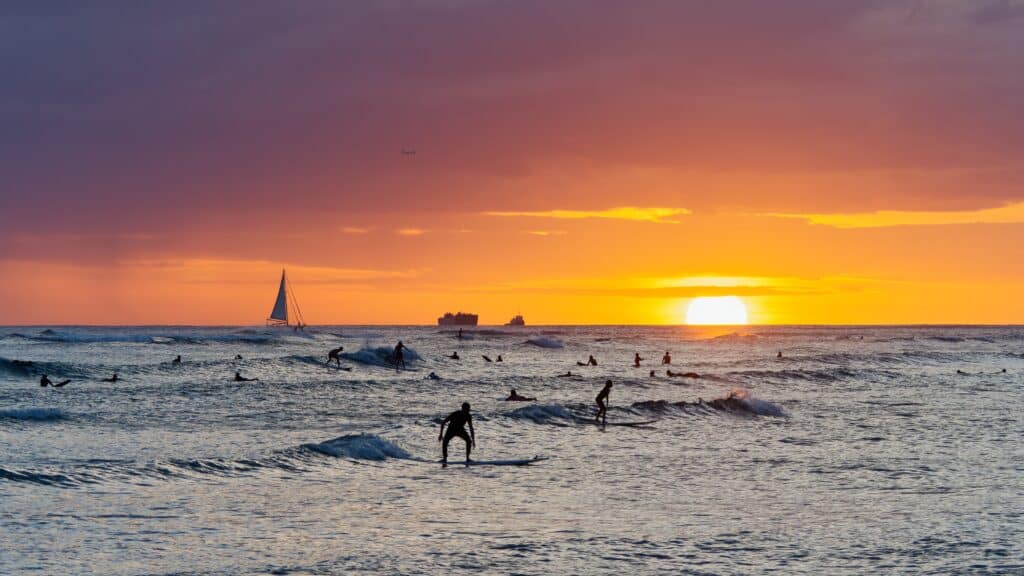
View from Waikiki beach (Shutterstock)
Best Surf Spots on O‘ahu
Nicknamed the “Gathering Place,” O‘ahu is a surfer’s dream, offering waves for every level. Whether you’re just starting out or chasing barrels, from the gentle, rolling waves of Waikīkī to the thunderous swells of the North Shore, surfing in O‘ahu is as diverse as its landscapes.
O‘ahu is home to over 100 surf locations, making it the most surf-accessible island in Hawai‘i. The North Shore is particularly legendary; where history is made each winter and where iconic breaks like Banzai Pipeline, Waimea Bay, and Sunset Beach draw elite surfers and photographers from around the world. Fun fact: it’s also where Baywatch Hawaii was filmed, adding a bit of Hollywood glam to the scene.
On the flip side, Waikīkī is perfect for beginners. With long, mellow waves and stunning views of Diamond Head, it’s where many locals and visitors catch their first ride. And if you paddle out early enough, you might even share the shore with a sea turtle or two.
North Shore: The Mecca of Hawai‘i Surfing
The North Shore of O‘ahu is globally renowned for its powerful waves and iconic surf. During the winter, November through February, the coastline becomes the epicenter of the surfing world. North-facing shores are at their most powerful and the surf is exhilarating — but also extremely dangerous so be sure to check conditions and know what you’re getting yourself into.
Banzai Pipeline (Ehukai Beach)
Known simply as Pipeline, the legendary break near Pūpūkea is one of the most iconic and challenging waves on the planet. Its perfectly shaped barrels crash over a shallow, razor-sharp reef just offshore, making it a magnet for professional surfers and world-renowned competitions like Vans Pipe Masters (you might remember from movies like Blue Crush). With winter swells reaching 20 feet or more, it’s both a surfer’s dream and a serious test of skill — strictly reserved for the experts.
Waimea Bay
Waimea Bay holds legendary status as one of the birthplaces of big wave surfing. On O‘ahu’s North Shore, the bay comes alive in winter, when swells soar to 30 feet or more, attracting elite big wave surfers from around the world. It’s also home to the prestigious Quiksilver Big Wave Invitational, a rare event held only when the waves reach 20 feet or more.
Sunset Beach
Stretching over two miles on O‘ahu’s North Shore, this versatile surf spot is known for shifting waves and multiple breaks. While it can be manageable for intermediate surfers in the shoulder seasons, winter transforms into a powerhouse of fast, heavy surf — ideal for experienced riders only. Its size and unpredictability make it a staple of the professional circuit and a favorite among seasoned locals.
Chun’s Reef
For those wanting a more forgiving wave on the North Shore, Chun’s Reef is a local favorite known for its laid-back vibe. The break is softer and more consistent, making it a great option for beginners, intermediate surfers, and longboarders. While rides can be long and smooth, it’s important to be mindful of the shallow reef beneath the surface.
South Shore: Waikiki and Surroundings
O‘ahu’s South Shore offers a stark contrast to the adrenaline-charged waters of the North Shore. Gentle, rolling waves make it an ideal playground for first-timers, families, and anyone seeking a laid-back ride. With a backdrop of Diamond Head and the city skyline, it’s not just a surf session — it’s a postcard come to life. Waikīkī is also one of the best places to take surf lessons in Hawaii.
The South Shore shines in the summer when swells generated by southern hemisphere storms bring consistent, rideable waves. Winter tends to deliver smaller, more flat conditions, making it a year-round favorite for mellow surf and relaxed vibes.
Waikiki Beach
Waikiki on O‘ahu’s South Shore is known the world over for white sand beaches and surfing. The 2.5 miles from Kaimana Beach to Magic Island has a reputation for being the best of the best. There’s probably a bit of hyperbole thrown in, but that stretch of coast has over a dozen surf breaks all the locals know and love: Castles, Publics, Walls, Cunhas, Queens, Canoes, Sandbar, Populars, Paradise, Threes, Fours, Kaisers, Rockpiles, and Ala Moana Bowls.
Some are choppy but less crowded. Others have regular waves with lineups of intermediate and advanced surfers waiting on the horizon. Either way, consistent wave quality and sandy bottoms at Waikiki provide a forgiving environment for those learning the sport.
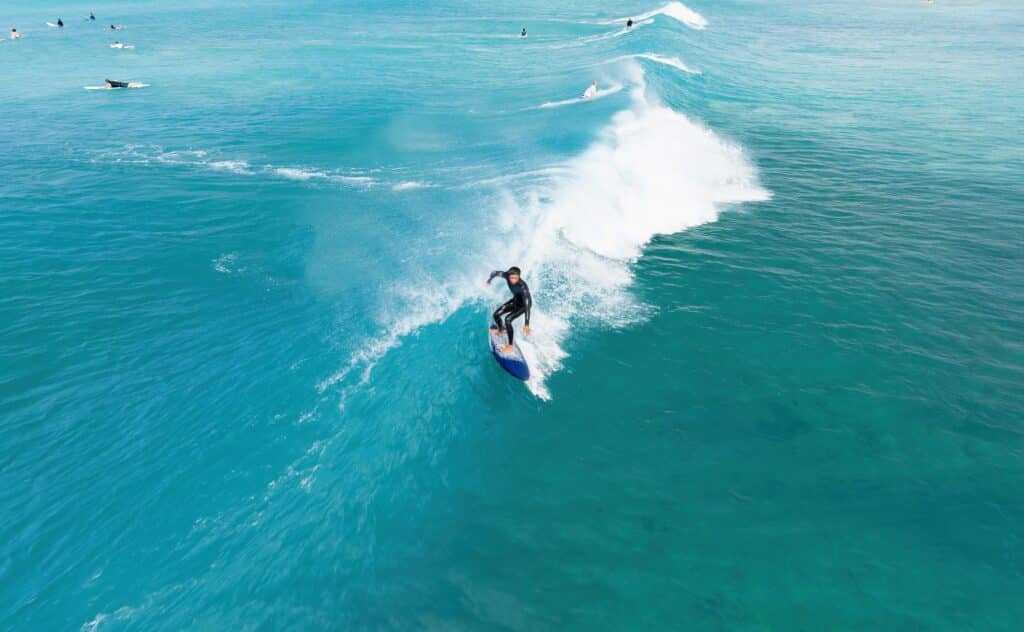
Riding the waves (Shutterstock)
Hawaii Surf Lessons — Waikiki
Waikīkī is one of the best places in the world to learn how to surf. Here are some standout surf schools that offer lessons right on the beach for beginners.
- Waikiki Beach Services — Operating since 1955, this historic school carries the legacy of the original Waikīkī Beach Boys. Located at the Royal Hawaiian Hotel and Sheraton, they offer surf lessons, outrigger canoe rides, stand-up paddleboarding, and beach rentals.
- Kahu Surf School — Right behind the iconic Duke Kahanamoku Statue, Kahu offers private and group lessons for all ages and abilities with a focus on technique, safety, and surf etiquette.
- Star Beachboys— Inspired by the legendary Beachboys, this school specializes in private, semi-private, and group lessons to help students surf confidently — often after just one session.
- Hans Hedemann Surf School — A trusted name in the surf community for over 30 years, Hans Hedemann offers flexible options including group, private, and even scenic sunset lessons.
- Mickey’s Surf School — A budget-friendly favorite, especially among Japanese and Korean tourists, Mickey’s provides beginner lessons with multilingual instruction and a welcoming approach for all ages.
West Side: Makaha Beach
Located on O‘ahu’s sun-drenched west side, Makaha Beach is a legendary surf destination with deep roots in Hawai’i’s surf history. Often hailed as the birthplace of big wave surfing, Makaha offers a mix of conditions that cater to longboarders, shortboarders, and bodysurfers. It’s uniquely positioned to pick up swells from both the north and south, making it one of the few spots on the island with nearly year-round surfable waves. As with all west-facing shores, the surf conditions here are dynamic and surfers rely heavily on local reports. Beyond the waves, Makaha is steeped in local surf culture, where respect for the ocean and for one another is as essential as the ride itself.
Surfing Kauai
Off-shore winds and ground swells bless Kaua’i with good surfing all year round. During the summer months of May to October, the south shore gets the biggest swells. In the Poipū area, surf spots abound, many within walking distance of each other. Starting at the Marriott Waiohai Beach Club, the waves at Waiohai Reef break both ways but the left is usually the longer and better ride. In front of the Grand Hyatt Kauai Resort at Shipwrecks Beach, you can feel swells coming from deep water where you catch waves breaking right.
Continuing down the shore, First Break is about 500 yards off the Sheraton Kauai Resort. But 500 yards offshore means a super-long paddle that typically only experts are willing to make. In front of the Beach House Restaurant and Prince Kuhio Condos are PK’s/Centers, a great spot for all levels. Continuing on, you’ll hit Acid Drops and Nukes. Your imagination can do the work there.
When the winter rolls around, the surf crowd shifts to Kauaʻi’s North Shore for legendary 30 to 40-foot swells from November to February. This includes the famed Hanalei Bay. During winter, the swells might be too much for beginners. But if you happen to be in Hanalei in the summer, it has just about the perfect conditions to learn.
Surfing Maui
Maui offers a diverse surf scene with spots for every level. For seasoned riders, Honolua Bay on the Northwest coast stands out, known for its clean, powerful right-handers. Nearby, Honokōhau Bay delivers both lefts and rights, but the right break is the highlight. On the remote North Shore, Peʻahi (Jaws) reigns as Maui’s big-wave epicenter, drawing elite surfers for its massive swells. Kahului Harbor is a local favorite on the North-Central coast with punchy rights and solid bodyboarding opportunities. In Lahaina, a trio of reef breaks — Kammies, Shark Pit, and Breakwall — offer a mix of challenges for experienced riders.
For beginners and intermediates, Maui’s South and West shores provide plenty of accessible waves. Breakwall in Lahaina is a go-to beginner break, offering consistent conditions and a sandy bottom. The Cove and Ukumehame in Kīhei are also perfect for learning, with small, gentle waves and plenty of space. Launiupoko, just south of Lahaina, has a soft left-hand break ideal for longboarding. Further north, S-Turns delivers clean, peeling waves suitable for all levels, while Wailea’s Stouffer’s Break is better for intermediate short boarders. Fleming Beach Park near Kapalua offers more power and is best suited to those with some experience.
Surfing Big Island
The Big Island may be less known for surfing, but it still has a variety of quality breaks. On the West Coast in Kailua-Kona, Banyans stands out as the island’s most consistent A-frame reef break. It works year-round, handling south swells in summer and northwest swells in winter. It’s accessible to all levels depending on the conditions, though caution is needed over the shallow reef. On the east side near Hilo, Honoli‘i is a reliable river mouth break that gets solid winter swell and wind-driven summer surf. Primarily a right, it offers lefts, too, and is more beginner-friendly during the summer months.
Along the Kona coast, Kahaluʻu Bay is a favorite for beginners. With three distinct peaks, the inside waves are gentle, while the outer waves suit intermediate surfers. Pine Trees, also near Kona, may not have the island’s best wave quality but makes up for it with consistency. It’s especially dependable during winter and welcomes surfers of various levels. Lastly, Lyman’s is a Kona gem for intermediate to advanced surfers, known for its clean lefts and unique bonus: whale-watching from the lineup. The limited access and minimal beach space make it a local favorite and not recommended for beginners.
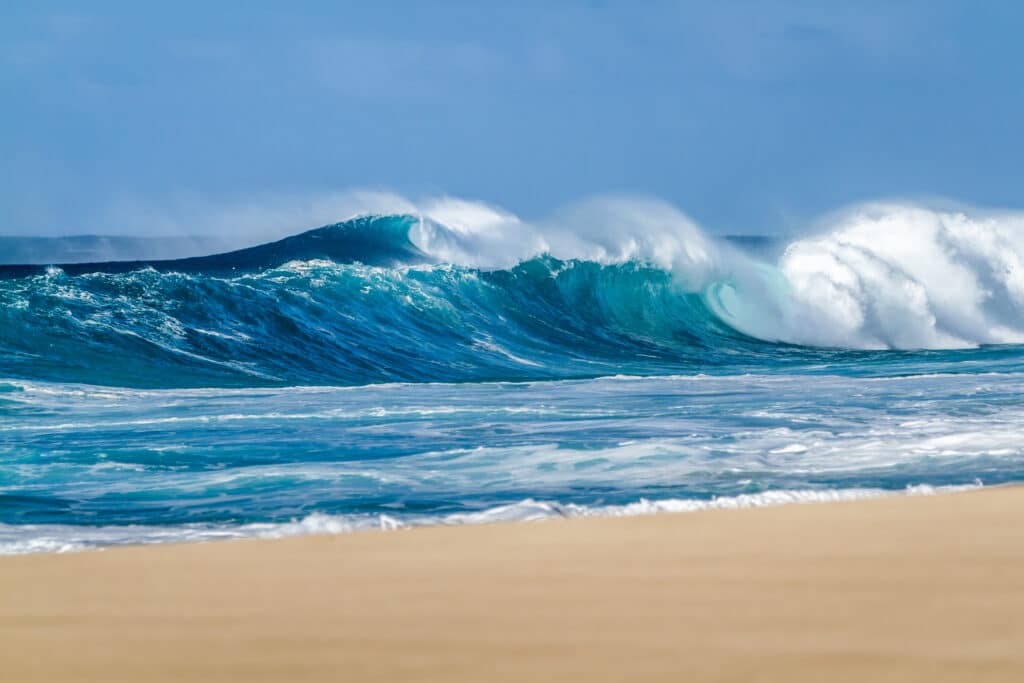
Big waves (Shutterstock)
The Eddie Aikau Big Wave Invitational: Surfing’s Ultimate Test
Held only when wave faces reach 20 feet or more for eight consecutive hours, The Eddie Aikau Big Wave Invitational at Waimea Bay is surfing’s most iconic and culturally significant event. Honoring legendary Hawaiian surfer and lifeguard Eddie Aikau, the contest runs only when the ocean delivers — and that can take years.
The waiting period runs from December 1 to February 28, but the call is up to nature. When The Eddie is on, surfers and spectators from around the world flock to O‘ahu’s North Shore to witness massive waves — sometimes up to 60 feet with elite athletes risking it all. If the waves don’t arrive, the event is postponed until next winter, keeping fans on edge year after year.
Learn more about Eddie Aikau’s legacy.
Women Making Waves
While surfing has long been a men’s sport, women are steadily making waves. From overcoming incredible odds to setting global milestones, female surfers are proving that the future of surfing is proudly inclusive. Bethany Hamilton, who lost her arm in a shark attack at age 13 on Kaua‘i, returned to the water just a month later. She went on to become a pro surfer, author, and mother. Meanwhile, Carissa Moore, a Native Hawaiian, made history by winning the first Olympic gold medal in surfing at the 2021 Tokyo Games, inspiring a new generation of female surfers around the world.
